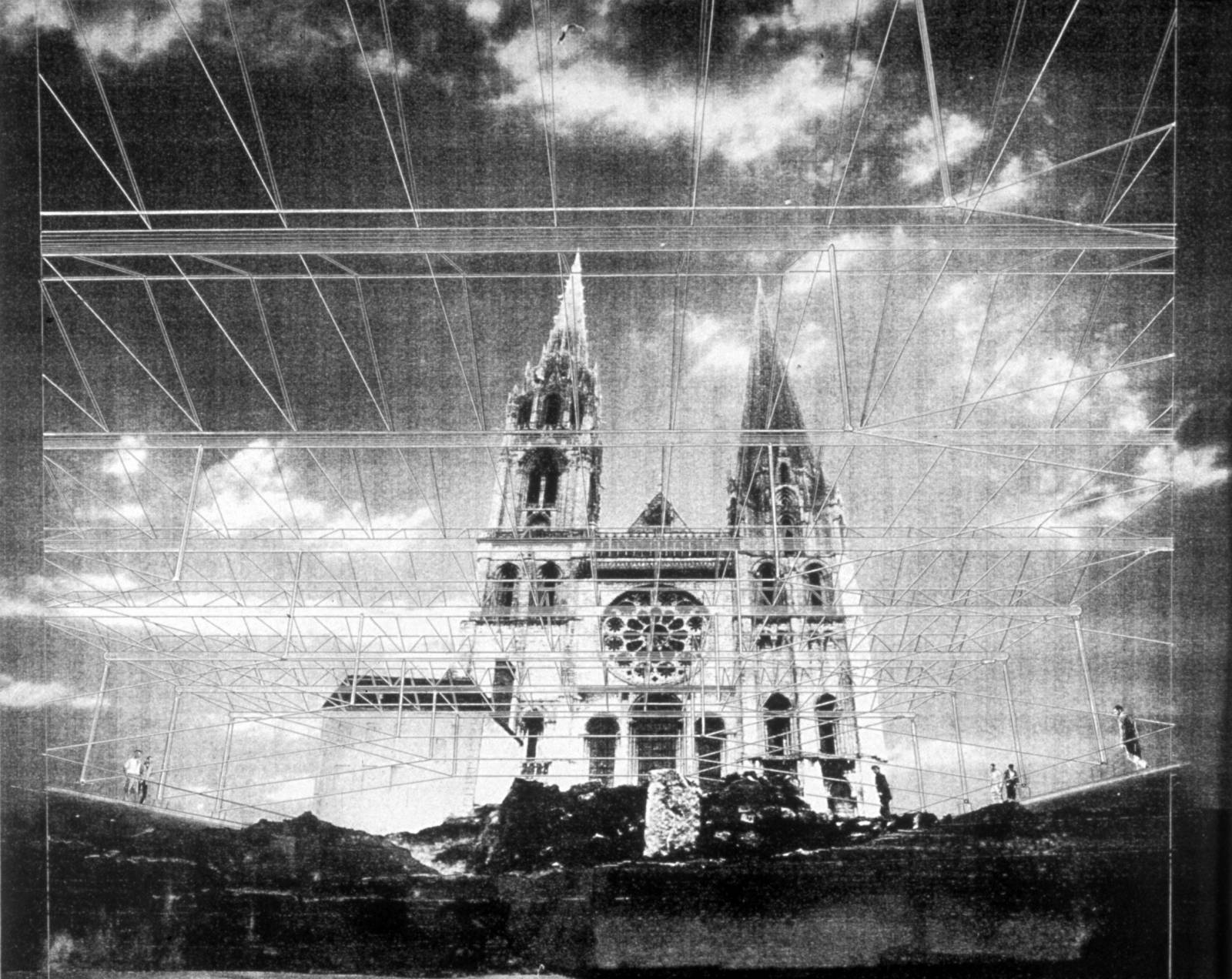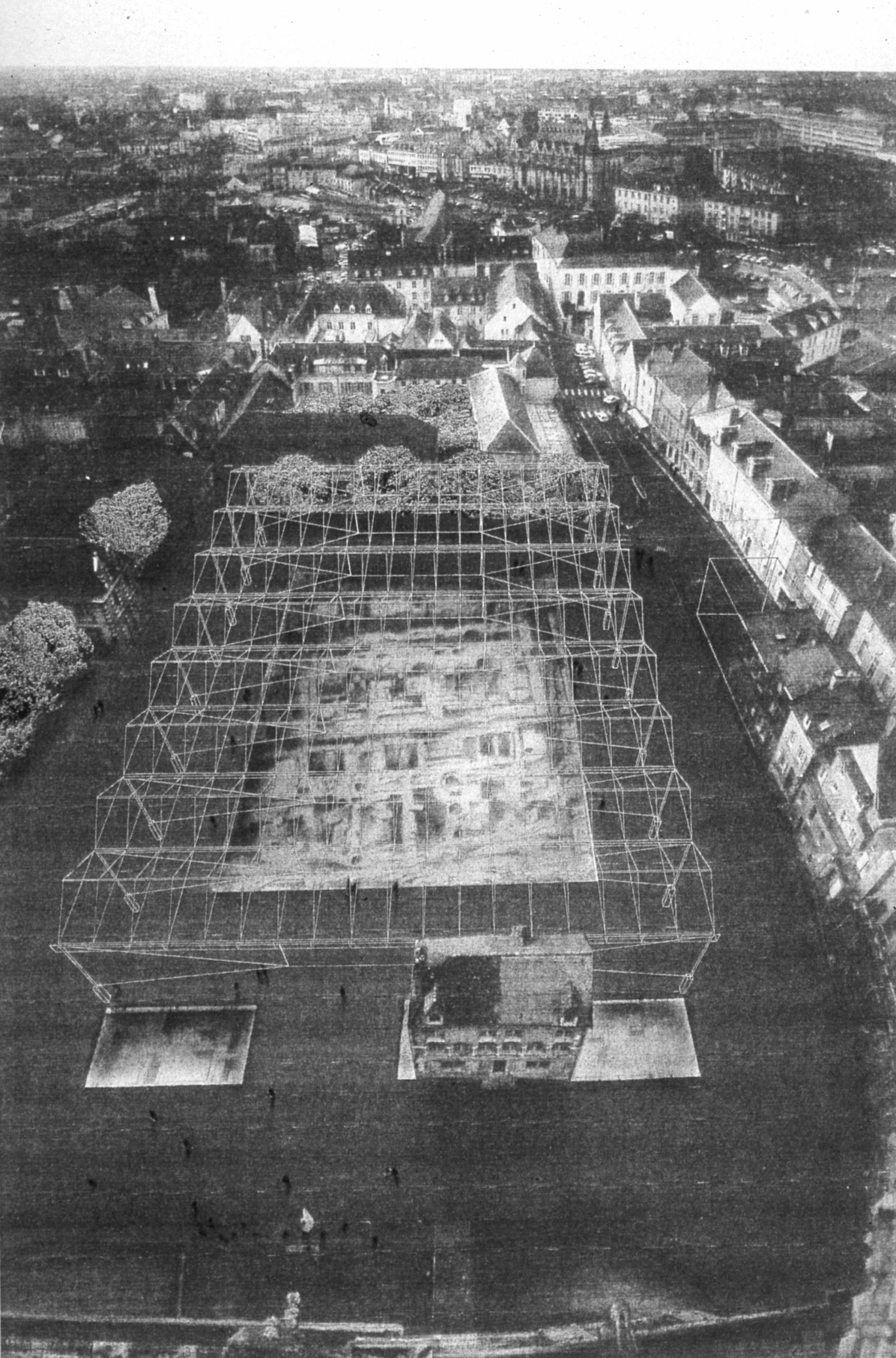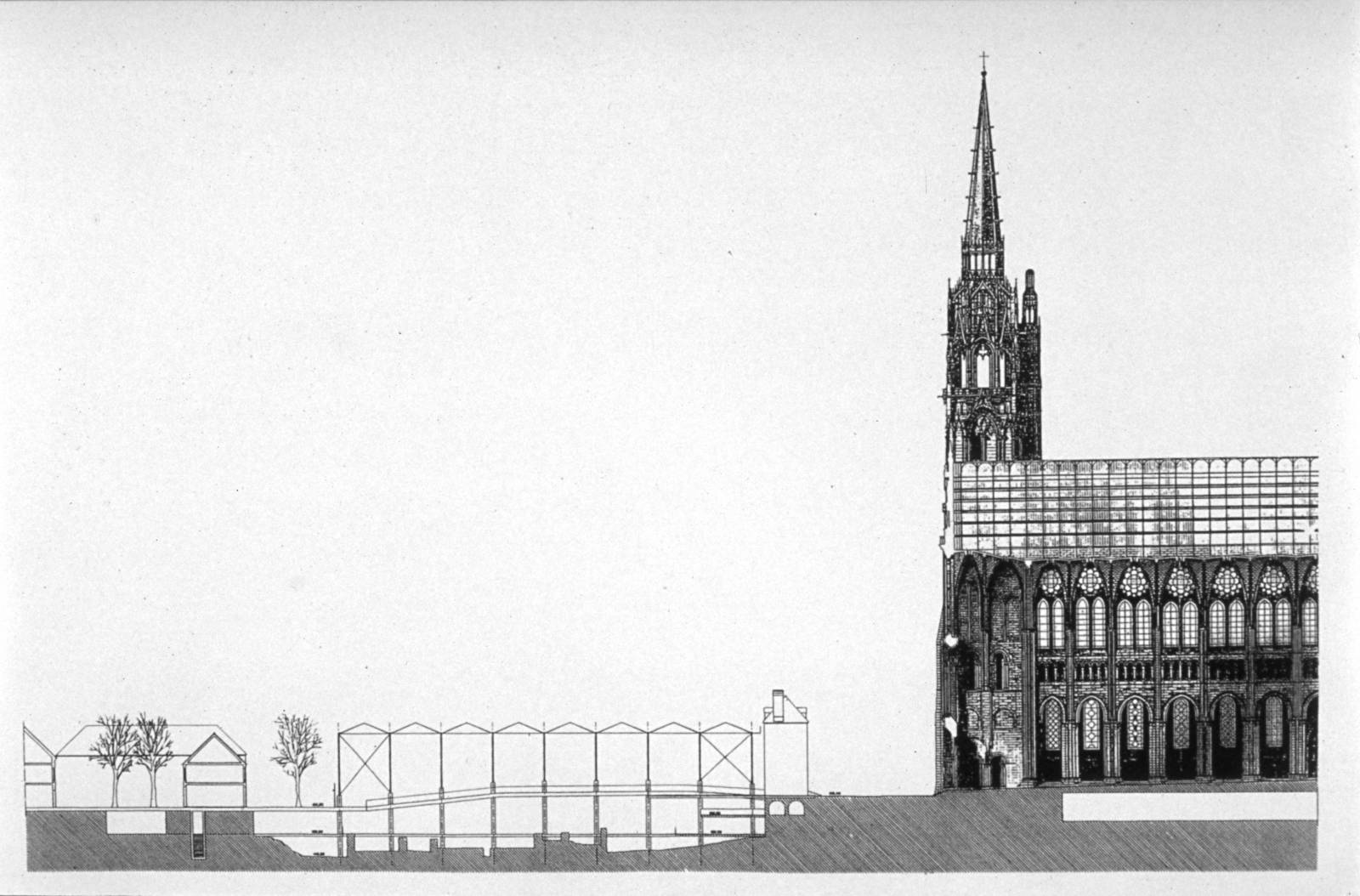‘The Cathedral Precinct’
- Chartres, France
Exceptional places exist
Touched by grace. Marked by history and mystery. Places where you wonder: why here? Why did it happen here? Chartres is clearly one of those places.
To build anything here today seems inappropriate, wrong.
Build what? Obviously something to the glory of… Something in the nature of a comment or a pointless piece of information.
Coming back here to build, for an architect, means reassessing his whole vocation. What do I have to say? What do I have to prove? Am I capable of adding a word to such a history? Do I really have a good enough reason, any legitimate right to propose anything at all? Do I really need to propose something just because I’m asked to?
This is where a fairly presumptuous exploration of possibilities begins. Where we start to analyse what makes this place exceptional. And it’s just one surprise after another: the cathedral was built on a Gallo-Roman town… There has always been life around it. And people have lived around it as a natural choice, as a matter of course. As though it protected its surroundings with its aura and its shadow. Building a museum here, today, does mean making a comment. Paying respect.
Maybe we can bring out more immediately a few sensations erased by history. Help people see more and feel more. Maybe, here, we can jog our collective memory…
The presence revealed by archeological digs of a Gallo-Roman town underneath the medieval town is a poetic event of the first magnitude. The intrinsic quality of the traces of building exposed to view doesn’t matter. The essential thing is the dizzying effect of the past. The buried presence of an architecture of ruins, with the buried vestiges built up in strata that we can now read like maps stolen from time.
The museum can only be like a note scribbled in the margin of the book already written. Focused on deciphering the signs now laid bare before us. A specific note giving the date. Useful for appreciating the place revealed.
Opposite the cathedral, beyond its medieval square, the ruins appear, surrounded by streets, roads, schools, commonplace buildings. Our aim is to promote a reading of these vestiges of past centuries. By using modernity to reveal the distance in time that separates us from the tokens present here. We are somewhere else. In the present and at the delicate stage of birth and precarious settlement.
We propose an architecture that’s a comment, one that speaks of distance and of respect. An architecture that bears witness to its own time as well as to other times. An architecture around… Dedicated to… Inscribed in the inert layers and available margins. An architecture that enables us to read the spectacle of a cathedral, and its town, and their roots.
That snakes around the excavation site, infiltrating the medieval courtyards and canons’ houses, and tracing a succession of different views from below of the façade and spires of Notre-Dame de Chartres. An architecture that uses every means in existence today to best insinuate itself, best inscribe itself, to best decipher. An architecture that looks straightforward, ordinary, where the only thing suspect is a technical precision geared to the light in this roof-filter that either plots our reading of the cathedral from below or gently paces our reading of the Roman and medieval traces from above, among the spires of the cathedral. This structure is a simple light-weight cover that turns into a shield thanks to the variable opacity of the glass used.
It’s a pathway between heaven and earth, between light and shade, where visitors can choose viewing angles and observation points for taking in the soaring spires or the Gallery of Kings.
It’s a screen offering varied revelations. Fields of white light, the interplay of composition and decomposition, an abstract play of light in grey and white that complements the bursts of colour in the dense glass and the sacred characters making up the stained-glass windows.
Here light is a miracle. Reading the cathedral from the outside, through light, in natural light, backlit, as a double exposure, is a homage to the light streaming down from the heavens. It is an act of faith.
Jean Nouvel







